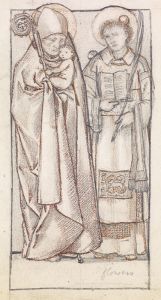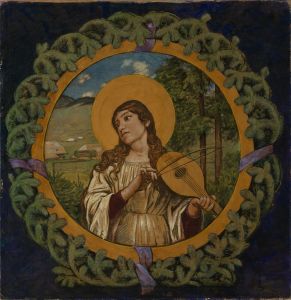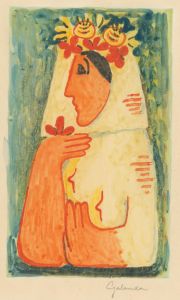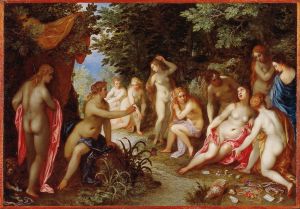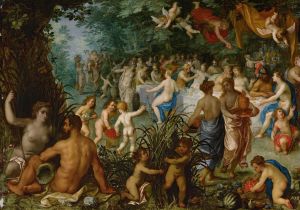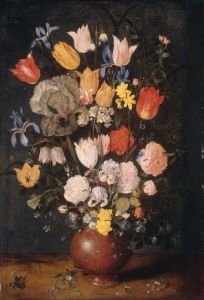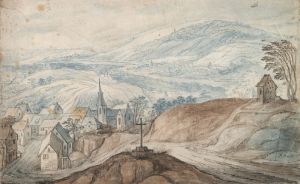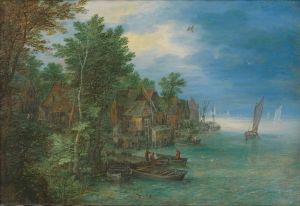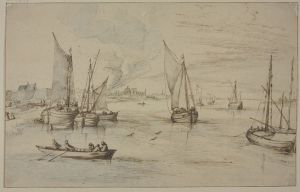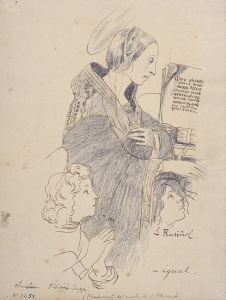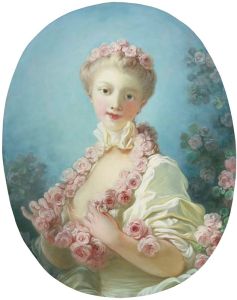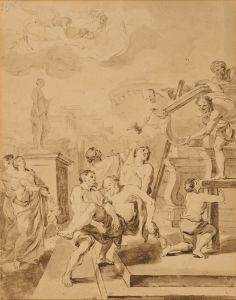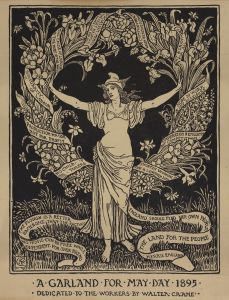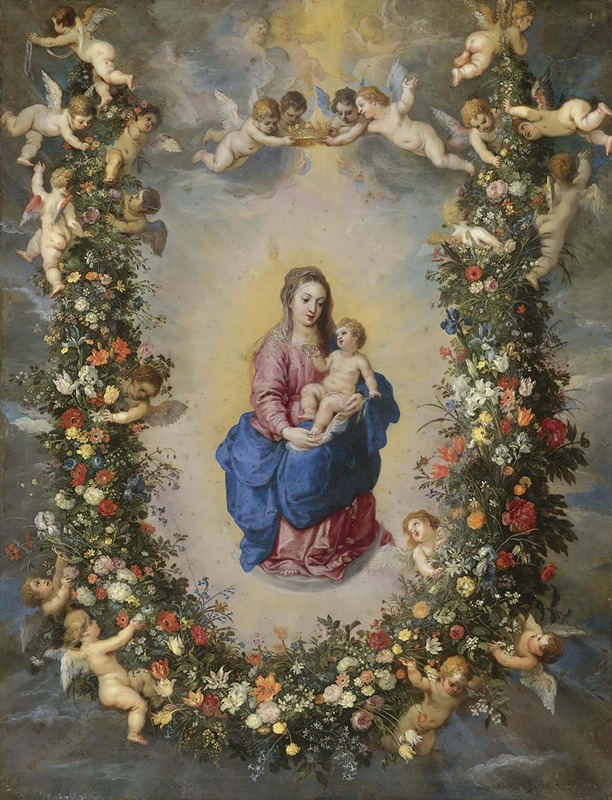
The Virgin And Child Encircled By A Garland Of Flowers Held Aloft By cherubs
A hand-painted replica of Jan Brueghel The Elder’s masterpiece The Virgin And Child Encircled By A Garland Of Flowers Held Aloft By cherubs, meticulously crafted by professional artists to capture the true essence of the original. Each piece is created with museum-quality canvas and rare mineral pigments, carefully painted by experienced artists with delicate brushstrokes and rich, layered colors to perfectly recreate the texture of the original artwork. Unlike machine-printed reproductions, this hand-painted version brings the painting to life, infused with the artist’s emotions and skill in every stroke. Whether for personal collection or home decoration, it instantly elevates the artistic atmosphere of any space.
Jan Brueghel the Elder's painting The Virgin and Child Encircled by a Garland of Flowers Held Aloft by Cherubs is a notable work of art from the early 17th century. Jan Brueghel the Elder (1568–1625), a prominent Flemish Baroque painter, was renowned for his intricate still lifes, landscapes, and collaborative works with other artists. This particular painting exemplifies his mastery in combining religious themes with detailed floral arrangements, a hallmark of his artistic style.
The artwork depicts the Virgin Mary holding the Christ Child, a common motif in Christian art symbolizing maternal love and divine grace. Surrounding the central figures is a meticulously painted garland of flowers, which is held aloft by cherubs. The floral garland is a significant element in the composition, showcasing Brueghel's expertise in botanical detail and his ability to render flowers with remarkable precision and vibrancy. The flowers, painted with great care, reflect the artist's interest in nature and his connections to the scientific study of plants during his time.
The inclusion of cherubs, or putti, adds a celestial and ethereal quality to the painting, emphasizing its religious significance. Cherubs were frequently used in Baroque art to symbolize divine presence and heavenly support. Their playful yet reverent demeanor in this work enhances the spiritual tone of the composition.
Jan Brueghel the Elder often collaborated with other artists, including Peter Paul Rubens, on religious and allegorical paintings. While it is not definitively documented whether this particular painting involved collaboration, it is consistent with Brueghel's practice of blending his detailed still-life elements with figures, either painted by himself or by other artists.
The painting reflects the Baroque era's emphasis on combining naturalistic detail with dramatic and emotive religious imagery. It also demonstrates the period's fascination with the interplay between the natural world and divine themes. The use of flowers in the garland may carry symbolic meanings, such as purity, beauty, and the transience of life, which were common interpretations of floral motifs in art of the time.
The exact date of the painting's creation is not firmly established, but it is attributed to Brueghel's mature period, during which he produced many works featuring floral garlands and religious iconography. The painting is an example of Brueghel's ability to merge devotional content with his technical skill in rendering nature, making it a significant piece within his oeuvre.
As of now, the painting is housed in a private collection or museum, though specific details about its current location or provenance are not widely documented.





